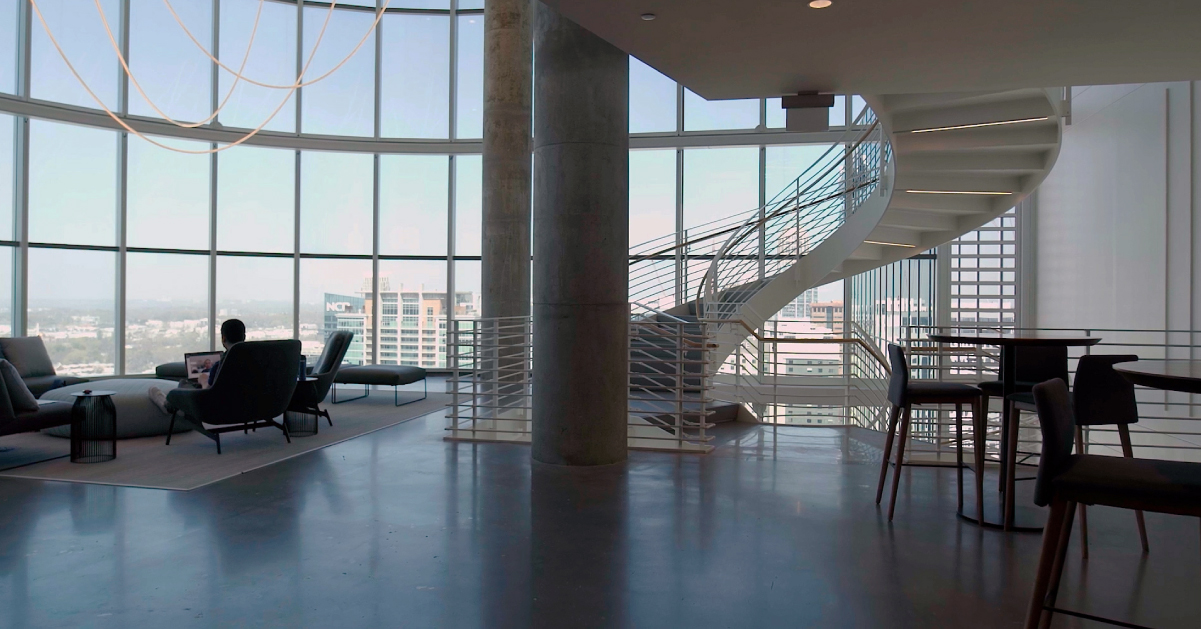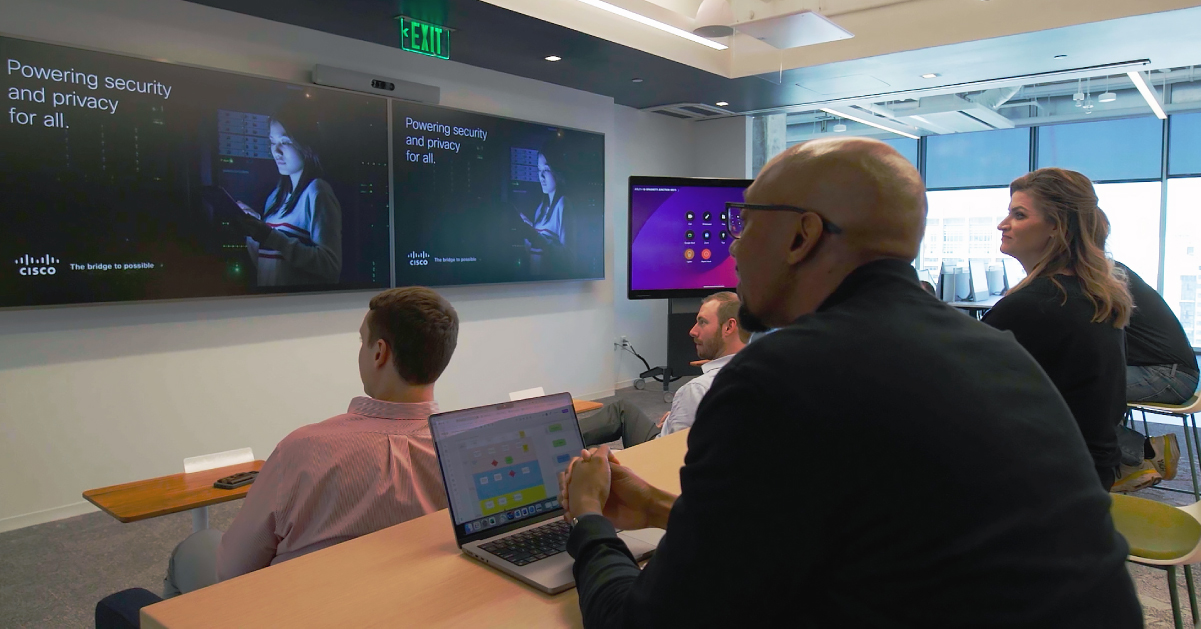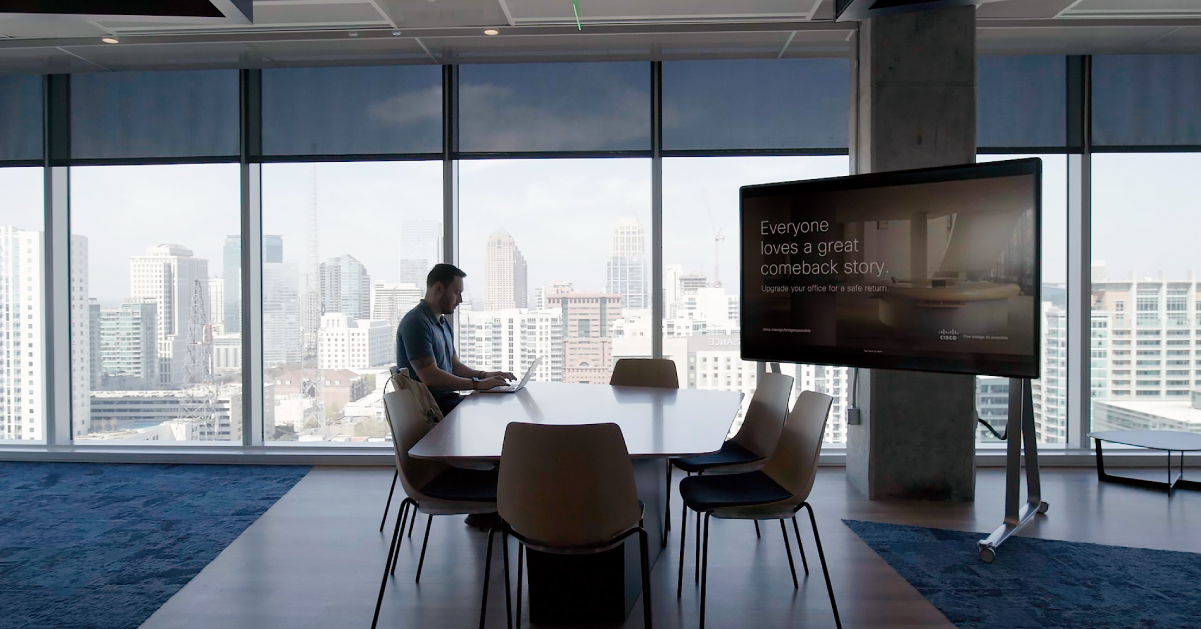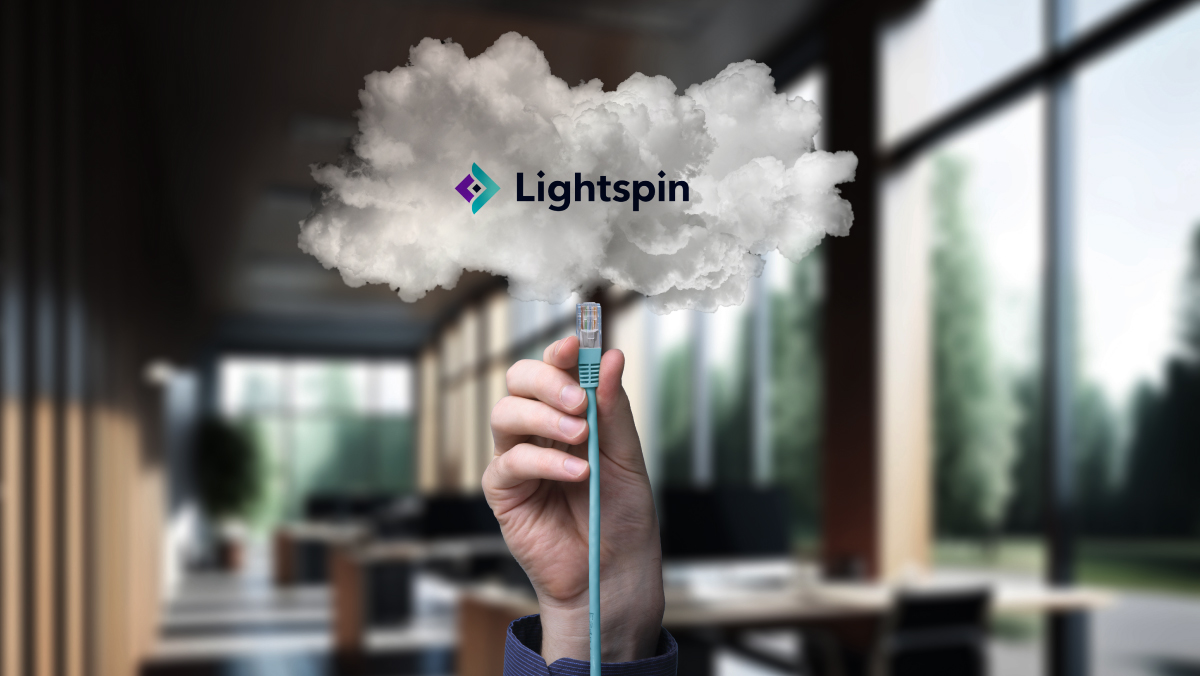Today, the very concept of work — how we do it, where, and with whom — is being upended. And many employees will run the other way from bland, impersonal cubicles and rigid, 9-to-5 in-office workweeks.
But the office experience remains highly relevant. It just needs to be reimagined for the hybrid-work revolution.
One such transformed space is Cisco’s Atlanta Collaboration Center. Like other newly renovated Cisco offices in New York, and Chicago, it combines hyperconnectivity, cutting-edge green tech, and beautiful, vibrant design to completely upend assumptions about what an in-office experience can be.
“If we’ve learned anything during the pandemic,” said Mark Miller, Cisco’s Director of hybid work strategy in Cisco Collaboration Sales, “it’s that focused work, individual work can be done remotely. And the reality is, when people come back to the office, they come back to collaborate or socialize. They come back to be around others. And largely, that’s what’s been driving our real estate strategy here at Cisco.”
For people to want to come to the office requires a highly flexible space that’s equally accommodating for group collaboration, spontaneous brainstorming, or heads-down individual creativity. And since studies predict that up to 98 percent of all meetings will include at least one participant attending remotely, those connections need to be equally good whether someone is collaborating from across the table or across the world.
“The focus is on how to make the office experience better, while providing the best digital quality to those individuals that are remote,” Miller added. “So, you’re going to continue to see advancements in camera technology, noise suppression, and language translation, as well as in co-creation and whiteboarding. But doing those not only for people who are present, but also for a much more dispersed population of people.”

Earning the commute
These latest Cisco offices are comfortable, welcoming, and aesthetically pleasing spaces, with abundant natural light and precise, data-driven temperature and air-quality controls. The goal is to attract workers, without mandating them to return.
“The office needs to earn the commute,” said Bob Cicero, Americas smart building leader at Cisco. “So, it’s a combination of not just the technology components but the physical built environment. And how do we think through health and wellness? How do we think about natural light? How do we think about combining all these pieces that enable us to perform the best that we can as human beings?”
Along with a strong emphasis on recycled materials, the design philosophy centers on accommodating all kinds of work — whether heads-down “me” time, collective group creation, customer meetings, or anything in between.
“One of the biggest challenges,” said John Labus, Cisco’s solutions design manager, “is of workplace design, especially as we move towards the ‘we’ environment. How do we create equitable experiences? One of the things we did in Atlanta is a lot of tiering, so everyone gets face time. If you are comfortable sitting on a sofa, if you’re comfortable sitting up in a stadium area, if you’re comfortable sitting in the open, that’s available for you.”
Throughout the Atlanta project, CRTKL, the architectural design firm that led the project in partnership with Cisco, was closely aligned with this philosophy.
“Our goal was to create a design concept that provides an equitable work experience,” said Jodi Williams, CRTKL’s principal and global solutions director for future workplace, “regardless of location, promoting collaboration both on-site and across geographies. The result is an office that serves as a magnet, not a mandate, providing an inspirational workplace and experience that is uniquely Cisco.”
A high-tech heart
Beneath that flexible, aesthetically pleasing surface beats a cutting-edge, high-tech heart, combining the latest in networking, security, Internet of Things, AI, and other technologies.
Data is critical for managing the space in the most efficient, sustainable, and healthy manner. So, in the Atlanta space, 8,000 data points capture a constant stream of insights from throughout the physical space. This enables precise, real-time awareness of lighting, air quality, temperature, room usage, and other factors. All of which is managed by intelligent, automated systems.
Moreover, nearly everything — lights, window shades, motors, cameras, sensors, and other devices — runs off low-voltage DC power, supplied by the network itself. This saves energy, especially from the inefficient conversion from AC to DC voltage, and it removes a large amount of high-voltage copper and steel conduit from the structure, materials responsible for substantial carbon emissions in their manufacture and transport.
“The built environment around this is all low-voltage technology that needs DC power to run,” explained Cicero. “With Power Over Ethernet, we’re providing the DC power that the components want natively, and we’re removing embodied carbon elements in the pipe and conduit. That’s thousands of pounds of steel and copper of the built environment that we just don’t need.”
In Cisco’s Penn1 office in New York, this collective innovation has resulted in major reductions in energy usage.
“There’s quite a bit of energy savings,” said Denise Lee, vice president for Cisco’s Engineering Sustainability Office. “Since the retrofit, from 2019 to 2022, the energy consumption on that floor of the building has been reduced by about 40 percent. And that’s just a retrofit. "It was a build-out of one floor of an old building; the walls and structure still stood."
Similar, or better, energy efficiency is predicted for Atlanta. As Bob Cicero points out, the Cisco Collaboration Center is in a LEED-certified Platinum building, so it should improve on an already efficient structure.

From data insight, great (and green!) design
Those many data endpoints contribute constant insights into what’s working and what isn’t in the Atlanta space. And that adds up to efficiency, sustainability, and great design.
“We now know where the energy's going,” said Cicero. “Before you had one giant energy meter. Now, with all the connected components and data sets we have, we know where all our energy is being utilized. So, we continually optimize that energy curve on this journey to net zero.”
At the same time, data informs the very design of the space.
“Everything being connected adds this incredible advantage that you start to get insights and data produced on how the space is being used,” said Miller. “The old line is the greenest square foot of real estate is the one you don't have to build. So, data on how our spaces are performing and how our employees are working within the space gives us great insights on how to build the next environment.”
Reflecting data insight on hybrid work patterns, the Atlanta space is smaller in square footage than many previous builds. Labus stresses that the data-driven design lessens the embodied carbon of unused space, yet it never feels confining.
“You do not feel like something’s missing here because what you’re missing is just a sea of unused workstations,” he said. “There is a rich collection of space types that allow everyone to feel like the world is their oyster. There’s lots of different opportunities for connecting with each other in person.”
CRTKL’s Jodi Williams sees the flexibility and aesthetics of the space as an inspiration to other companies, many of which are grappling with their own future strategies for office layouts and technology in the hybrid-work era.
“It's a great use case for what the future of work can look like,” she said, “and a blueprint for others to follow in creating workplaces that embody functionality and beauty.”
A revitalized urban ecosystem for an inclusive future
Since the pandemic, many urban business zones have struggled with downturns in daily economic activity. But the Atlanta Collaboration Center is meant to be a key driver of a revitalized business, technology, and educational ecosystem in midtown Atlanta — while reflecting Cisco’s commitment to powering an inclusive future for all.
Adjacent to Georgia Tech and close to Moorhouse College and other institutions, the Center is committed to supporting and developing an inclusive, diverse, and vital future workforce. It will promote internships, mentorships, and classes with Cisco’s Networking Academy, one of the largest and most effective technology training programs in the world.
“What excites me is that I see the young talent coming into the Atlanta office,” said Labus. “And the enthusiasm for what they see and how they can engage with each other is just very, very encouraging — that we are hitting the mark, that we are resonating with the next generation of talent.”
Cicero can’t wait to see the innovation that next generation will drive, in the smart-building space and beyond.
“What excites me is seeing the energy coming back to the Atlanta space,” he said, “but also the innovation that’s yet to come every single day at Cisco. That’s what we do. We’re going to continually push and move the world forward.”



